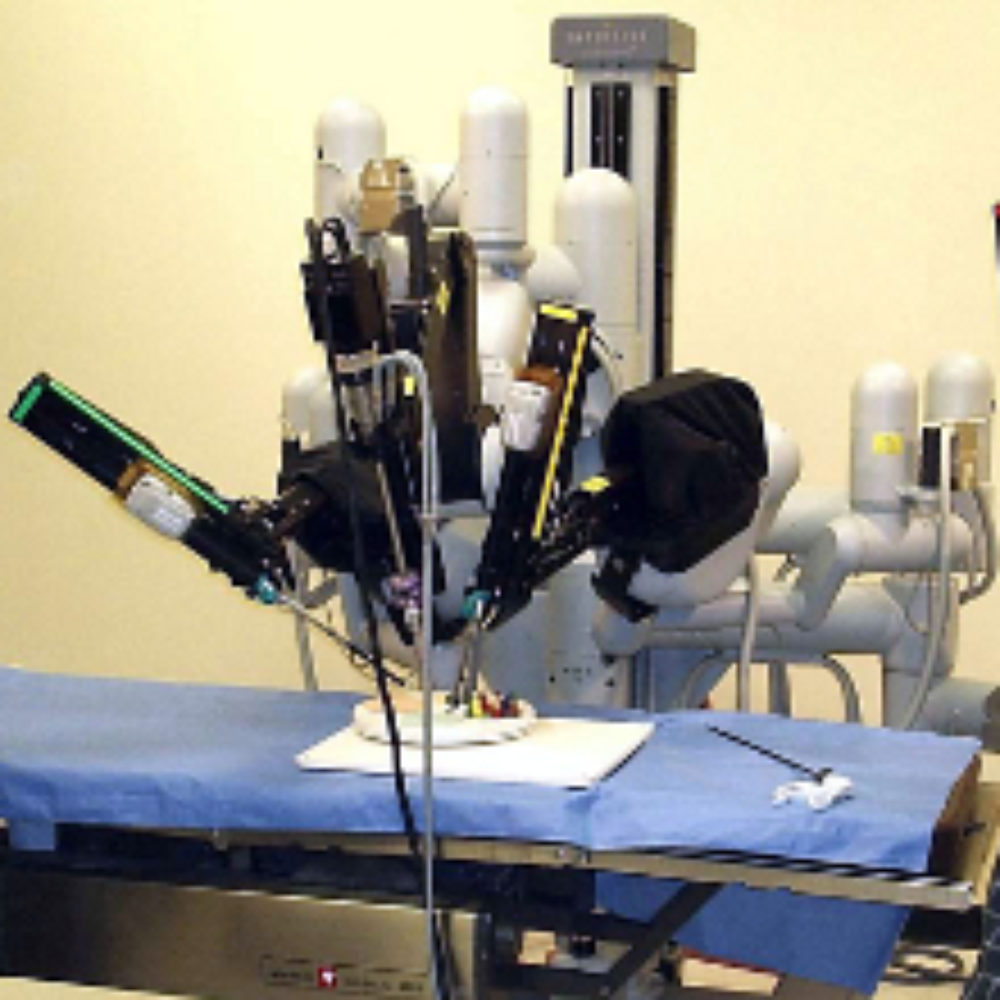da Vinci Hysterectomy Surgeries May Slow Amid Morcellation Cancer Risks

Following a recent FDA warning about the risk of morcellation during uterine fibroid surgery spreading cancer, it is expected that the rate of da Vinci robotic hysterectomies may slow, since power morcellators are often used during the procedures.
The da Vinci Surgical System is a complex robot manufactured by Intuitive Surgical, which is used in a variety of different urologic, gynecologic and other laparoscopic surgical procedures.
It is designed to provide a minimally invasive surgery, where four arms are remotely controlled by a surgeon through the use of hand and foot controls while sitting at a console that provides a virtual reality representation of the patients internal organs.

Learn More About
Power morcellators used during a laparoscopic hysterectomy or uterine fibroid surgery may cause the spread of aggressive cancer.
Learn More About this Lawsuit SEE IF YOU QUALIFY FOR COMPENSATIONRobotic hysterectomy surgeries are one of the more common uses for the da Vinci Surgical System, where the robot assists in the surgical procedure to remove the uterus.
Although the da Vinci robot itself does not include a power morcellator, it is common for robotic hysterectomies to be performed together with morcellation using the hand-held tools.
Last week, Intuitive Surgical cut predictions for da Vinci robot procedure growth for this year from 9-12% down to 2-8%. The company indicated that the FDA’s recent warnings over the potential cancer risks from robotic hysterectomy procedures with morcellation is partially responsible.
Power Morcellation Cancer Concerns During Robotic Hysterectomy
Power morcellators are medical devices used during da Vinci hysterectomies, as well as laparoscopic supracervical hysterectomies and myomectomies for removal of uterine fibroids. Surgeons use the morcellators to cut the uterus or fibroids into smaller pieces that can then be removed through small incisions in the abdomen.
On April 17, the FDA issued a safety communication urging doctors to avoid use of morcellation in uterine fibroid surgeries. The agency indicated that about one in 350 women undergoing the procedures may have unsuspected sarcoma, which doctors are unable to detect prior to the hysterectomy.
For these women, morcellation of the uterus or uterine fibroids may cause cells containing leiomyosarcoma or other cancers to be spread throughout the body, greatly decreasing the woman’s chances for long-term survival.
The FDA has indicated that use of morcellators during a robotic hyesterectomy, laparoscopic hysterectomy or laparoscopic myomectomy carries an unreasonable risk, given the availability of other methods of performing the procedures.
More than 500,000 da Vinci surgical procedures were performed in 2013, and the manufacturer indicated in a conference call only days after the FDA announcement that growth of that number this year will be substantially lower than previously estimated. Intuitive Surgical specifically indicated that gynecological use of the da Vinci robot is likely to be impacted by the FDA’s statement discouraging use of power morcellation techniques.
Since the FDA announcement, a number of major hospitals have placed a moratorium on the use of power morcellators, and Johnson & Johnson, which commanded nearly three-quarters of the power morcellator market, halted sales and promotion of their devices last week.
Last week, a New York woman filed a lawsuit against Johnson & Johnson’s Ethicon division, alleging that use of morcellation during a da Vinci hysterectomy caused leiomyosarcoma to spread throughout her peritoneal cavity.
It is expected that a number of other hysterectomy cancer lawsuits will be filed in the coming months, as women and families learn about the link between the use of power morcellators and the diagnosis of late-stage, aggressive cancers.
Other da Vinci Robotic Surgery Concerns
In addition to concerns over the FDA statement regarding use of power morcellators, growth of da Vinci surgical procedures may also be impacted by a number of other concerns over the safety of the device and reports of complications following da Vinci surgery.
Intuitive Surgical also faces a number of da Vinci robotic surgery lawsuits brought on behalf of patients who indicate that they suffered complications following procedures, which were allegedly caused problems with the design of the system and instructions provided for surgeons.
According to allegations raised in the complaints, Intuitive Surgical sold the surgical system without ensuring proper training and instructions for surgeons, and without providing adequate warnings for consumers about the risk burns, tears and other injuries that may occur during da Vinci surgery.
Last summer, Intuitive Surgical scaled back sales expectations for the da Vinci robot amid shrinking hospital budgets, several da Vinci recalls impacting different components and concerns over aggressive sales techniques.
In January 2013, a report by the investment research firm Citron Research highlighted a number of potential issues with the da Vinci robot and Intuitive Surgical’s response to those problems. Citron identified more than 4,600 adverse event reports submitted to federal health regulators involving the da Vinci robot, highlighting what the analysts described as a disturbing trend with the manufacturer making “clearly unfathomable” assertions that the complications had nothing to do with the da Vinci robot.
Growth in da Vinci procedures may have also been impacted by continuing concerns over whether the costs associated with robotic surgery are justified. In February 2013, a study published in the Journal of the American Medical Association (JAMA) found that da Vinci hysterectomies increase costs by more than $2,000, while providing virtually the same complication rate as laparoscopic surgery.
Get more articles like this sent directly to your inbox.
"*" indicates required fields
6 Comments






KellyApril 1, 2016 at 6:06 am
I had my surgery in Nov. of 2014. My doctor used the DaVinci and I was injured. My right distal ureter was cut causing a fistula, which caused me many problems. I'm still not fully healed. I do not recommend.
TinaFebruary 11, 2016 at 2:09 am
I recently had a partial hysterectomy done using the DiVinci robot. I healed fast and pain was minimal. My concern is how would I know if my surgery caused cancer? Do I need to be screened? What's the time line? It's been 2 months now and I'd like to know approximately how long after surgery was cancer detected?
JudyAugust 11, 2015 at 1:25 pm
How can I find out if a da vinci robot was used in my surgery?
ShaneApril 21, 2015 at 8:49 am
I had a hysterectomy after a partial molar pregnancy with what would have been my 7th daughter at age 41. I wasn't given the option if the surgery was done with the di Vinci. Only 12 surgeries had been done with the robot in omaha me and my dr did half of those, one being a friend of mine and her bowel was nicked during the surgery. I almost died from a serious infection at 10 days post op. I'm st[Show More]I had a hysterectomy after a partial molar pregnancy with what would have been my 7th daughter at age 41. I wasn't given the option if the surgery was done with the di Vinci. Only 12 surgeries had been done with the robot in omaha me and my dr did half of those, one being a friend of mine and her bowel was nicked during the surgery. I almost died from a serious infection at 10 days post op. I'm still not fully healed and it's been 6 months since my hysterectomy. I stopped seeing my dr because every time I saw him something worse happened to me after he treated me. I will never recommend the di Vinci and I wish I would have listened to my friend when she warned me not to let them use it.
CinnamonFebruary 13, 2015 at 3:28 pm
How can I find out if my doctor used this method on my hysterectomy ???
DawnOctober 16, 2014 at 7:04 pm
How can I find out if they used one in my partial hysterectomy?